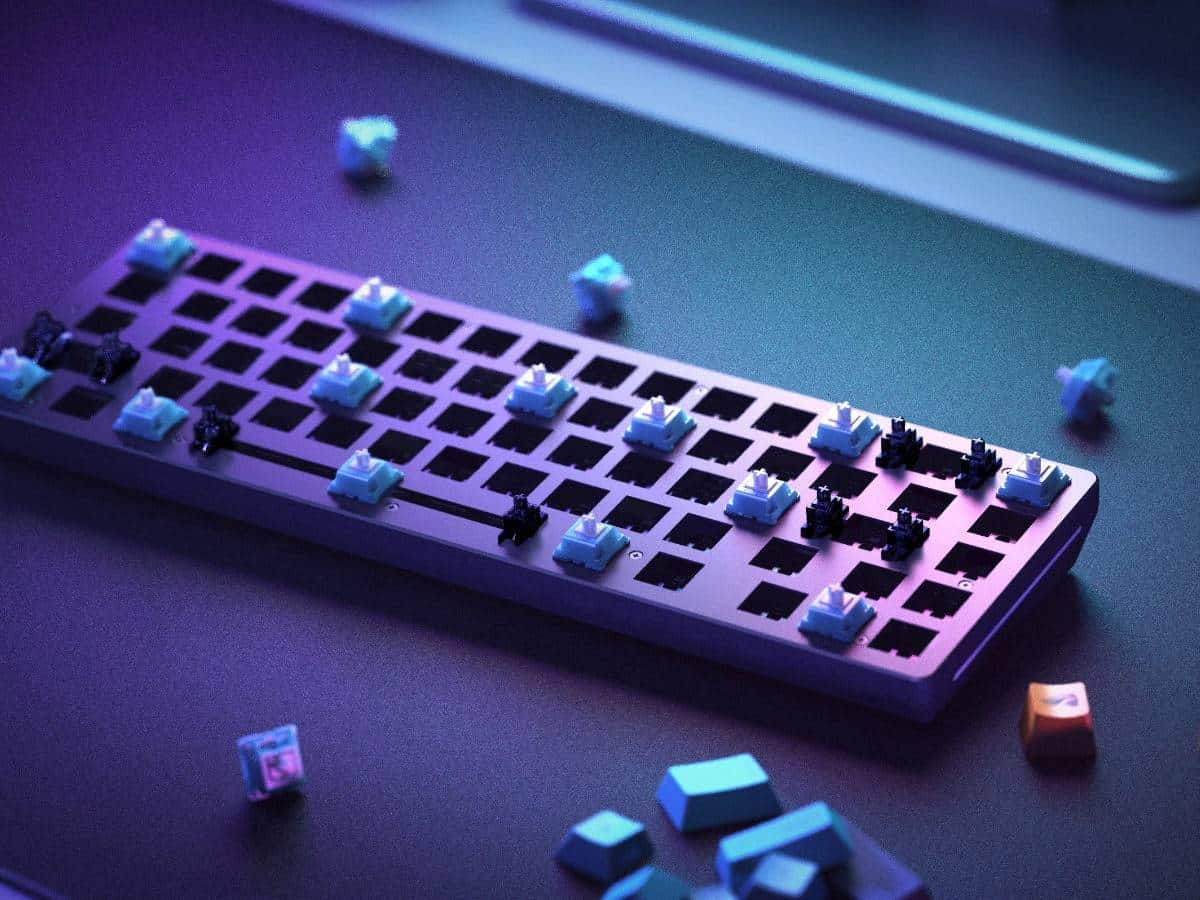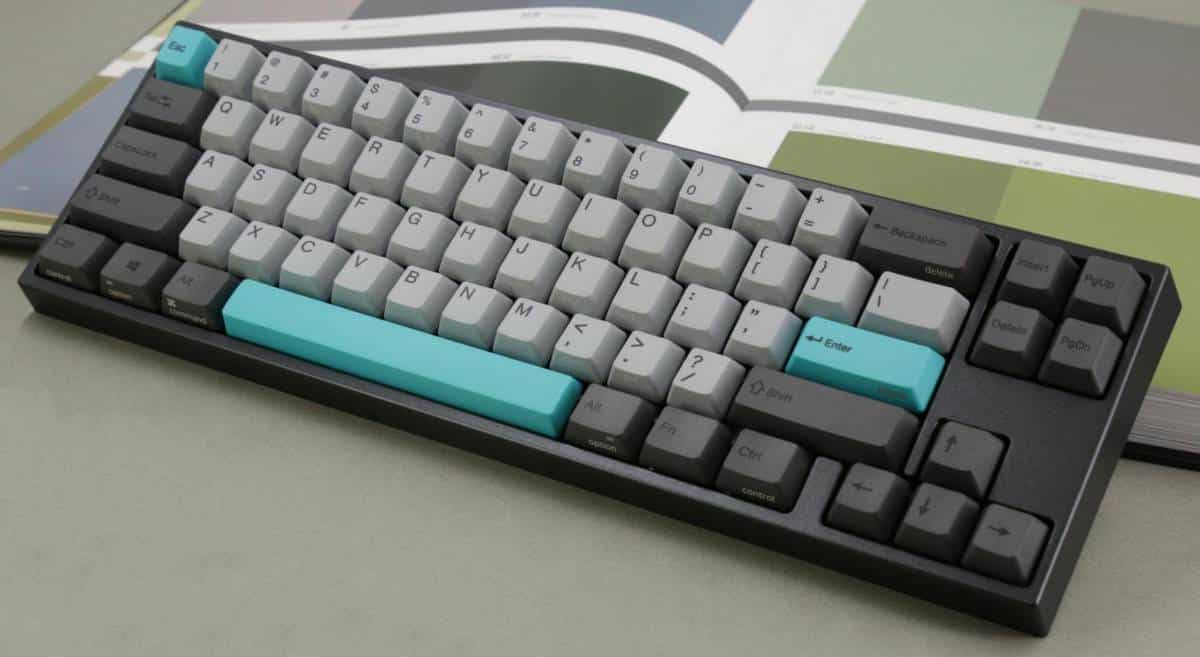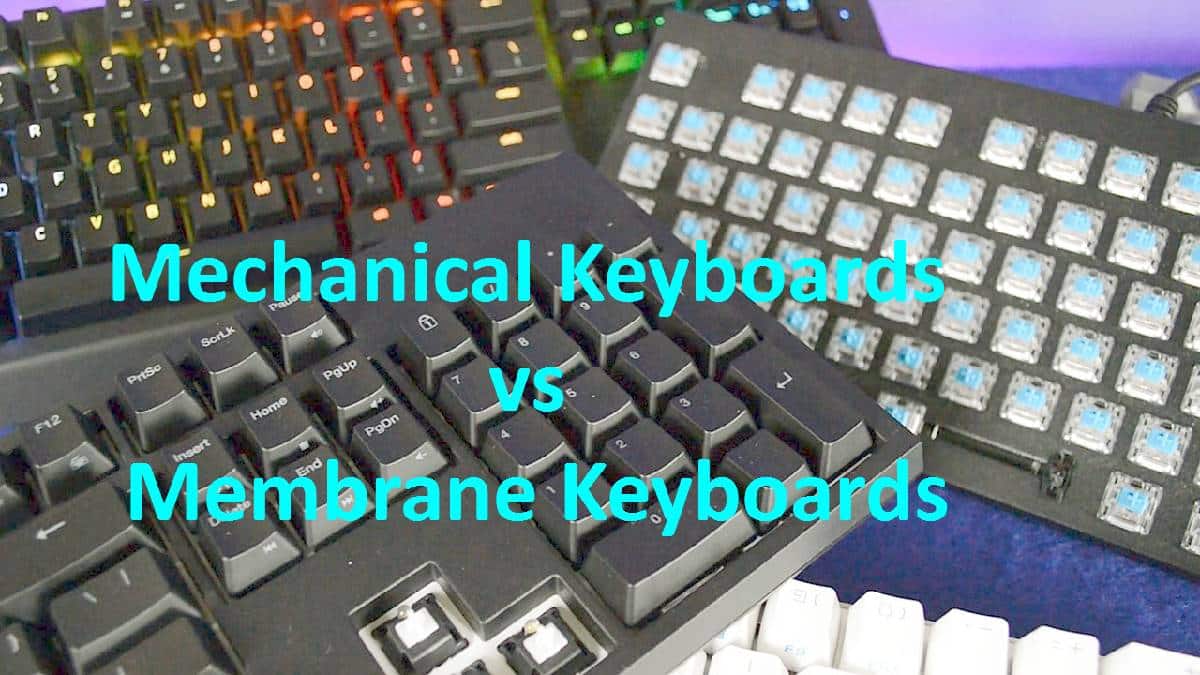Mechanical Keyboards vs. Membrane Keyboards: In the realm of computers, there is a great deal of information surrounding keyboards. The world of keyboards is a completely own universe, and it is home to a wide variety of membrane and mechanical keyboards in their many iterations.
Membrane keyboards are the most common type of keyboard and also the ones that are sold at the lowest price. Mechanical keyboards, on the other hand, are a step up from membrane keyboards.
Membrane keyboards are distinguished by the presence of a pliable membrane within the keyboard caps, which produces a gentle sensation when the keys are pressed. Mechanical keyboards, on the other hand, use a variety of mechanical switches underneath each keycap. These switches give the keyboard a more tactile feel and make it easier on the hand.
Must Check: 10 Best PC Gaming Chairs Under $100
Mechanical Keyboards vs. Membrane Keyboards
If you can’t decide which one to choose, you’ve arrived at the perfect place. If you’ve finished reading this article, you won’t have any more questions about whether to choose a mechanical or membrane keyboard. If you are curious as to why, then you should continue reading.
When the keytop areas are pressed, a membrane keyboard is activated because there is an electrical contact between the keyboard surface and the underlying circuits that work underneath the keyboard.
The most significant drawback of this keyboard is that it is difficult to type without making any mistakes while using it. Most people struggle when attempting to use it to enter longer passages of text.
But mechanical keyboards are very different from their electronic counterparts. They have a longer shelf life, offer very high levels of tactile input, and reduce the amount of strain placed on the hand when bigger amounts of text are typed. Because of this, membrane keyboards can be mass-produced with relative ease, and as a result, they are the type of keyboard that can be purchased for the lowest price.
A membrane keyboard can be purchased for as little as five dollars.
In contrast to membrane keyboards, mechanical keyboards feature either of these switches hidden behind the keycaps. Membrane keyboards are used to send electrical impulses.
Mechanical Keyboard Switches
- Blue Switch
- Red Switch
- Black Switch
- Brown Switch, etc.
And a significant number of businesses have already made similar transitions. The most common one is the Cherry MX. There are many additional brands, such as Kailh, Romer G, Greetech, Gateetech, and Razer.
Each switch has its own set of benefits; for instance, blue switches are chosen by typists and writers, while red/brown switches are the most popular choice among gamers.
We know that you are confused; to illustrate this, let’s look at cherry switches.
Must Read: 5 Best Mechanical Gaming Keyboards
4 Cherry Switches Based on Colors

The first Cherry switch was sold in 1983, and production has continued ever since. Cherry switches are often considered the most desirable type of switch for use in a mechanical keyboard.
1) Cherry MX Blue:
Typists and writers will typically go for blue switches since they have a distinct click to them and, in comparison to other switches, they have a weightier feel to them. Typists will find it to be manna from heaven thanks to its wonderful sound, similar to a typewriter’s sound. If you type a lot, you should go for this one.
2) Cherry MX Red:
The most common preference among gamers is for red switches. They don’t have the same clicky sensation as the Blue Cherry and have a lighter overall feel. Because it does not produce any sound, it maintains its silence. Choose this one if you don’t want any noise to come from your keyboard at any point.
3) Cherry MX Black:
Gamers also favor using black switches over any other color. The Cherry Reds are much lighter in comparison to these. On the contrary, they tend to be on the weightier side. Even blacks maintain complete silence and make no sound at all. Because of this, there is very little hysteresis, making it an excellent choice for fast-paced gameplay.
4) Cherry MX Brown:
Brown switches, on the other hand, offer the best tactile feedback of all the switches. Other switches don’t offer much sensation at all. They fall under the medium-weight category because they are neither too light nor hefty. The switches at Brown’s don’t create any noise and are entirely silent. It has the perfect balance of features for gamers and typists alike.
It does not imply that any other switches are lacking in quality; instead, it merely highlights the fact that Cherry MX switches were an industry pioneer regarding mechanical keyboards.
In case you were wondering, the color pattern is typically the same whether you use Gateron or Kailh switches. As a result, you do not need to be perplexed about which option to pick. There are a wide variety of styles, sizes, and colors available for mechanical keyboards.
Take a look at this computer keyboard:

This keyboard is only 60% of the size of a full-sized keyboard, so it only has sixty keys instead of 104. In addition to that, they come equipped with lights, which are very helpful for typists and gamers who work at night.
The keycaps on a mechanical keyboard are easily replaceable and may be swapped out for new keycaps of your choosing. This is yet another advantage of using a mechanical keyboard. You can customize your mechanical keyboard in this way if you like to.
Did you know that mechanical keyboards offer superior durability and usually have a 50-million keystroke lifecycle?
Because my Grandpa’s mechanical keyboard is in such good working order even after 50 million keystrokes, its lifecycle is considered to be rather impressive.
In addition, they operate admirably compared to any membrane keyboard available on the market. You are now aware of the rationale for the relatively high cost of mechanical keyboards.

Difference between Mechanical and Membrane Keyboards
A keyboard is comparable to a typewriter but has an updated keys arrangement. In its most basic form, it is an input device that receives letters or characters from the user, processes that information, and then displays the results on the monitor’s screen. It contains a lot of keys, which are actually just pushbuttons.
In the beginning, keyboards were just used for typing, but now they are also used in gaming, editing, and other professional settings.
There are a wide variety of keyboards on the market, including virtual keyboards, mechanical keyboards, membrane keyboards, flexible keyboards, gaming keyboards, wireless keyboards, and wireless gaming keyboards.
In this discussion, we will look at the differences between membrane keyboards and mechanical keyboards.
1. Membrane Keyboard:
A membrane keyboard is distinguished by its use of a membrane, with each key being separated into its own pressure-sensitive section of a three-layered membrane. Pressing the key in that particular place will register as a keystroke if enough pressure is applied.
Its most basic form consists of a circuit hidden beneath a layer of rubber, and on top of that, there is a set of buttons or keys that correspond to the keyboard’s layout. When any of the buttons on the panel are pressed, a force is applied to the rubber layer below it, which is then connected to the circuit. When the rubber layer pushes the circuit, the information is sent to the computer’s central processing unit (CPU) by the circuit. After that, the CPU displays the results on the screen.
The keys need to have a significant amount of force applied to them for the rubber layer to make contact with the circuit. One example is computers such as the Magnavox Odyssey2 and the Sinclair ZX80 and ZX81.
2. Mechanical Keyboard:
It was initially shown in the year 2000. Each key on a mechanical keyboard is controlled by its own separate switch. It won’t register as a keystroke until you press the key down far enough to activate the switch on the key, but as soon as you do that, it will.
It has a system that allows it to function correctly. In contrast to membrane keyboards, this one does not have a layer of rubber between the keys. There is a mechanism inside that is activated whenever the key is pressed. The circuit sends the information to the CPU by the circuit when they collide, and the CPU displays the collision results on the screen.
Even if only a light amount of pressure is applied to the keys, the mechanism inside will still be able to detect it. For instance, the Corsair K95 RGB Platinum XT and the SteelSeries Apex 7 TKL are similar products.
There are several different kinds of mechanical keys, one of which is called a cherry MX, and you can find them in many different keyboards.
Cherry MX keys are manufactured with various names, colors, and other characteristics that vary from one another and are distinct from one another. Cherry MX’s primary color palette consists of red, brown, and blue. Thanks to their colors, one can identify the keyboards, their individual specs, and how they operate.
When blue cherry MX are pressed, they make a sound similar to that of a mouse click, and this sound is relatively easy to listen to. The brown cherry MX strain does not make any audible clicks. There is a clickable sound while using Red Cherry MX. However, it does not produce the same sound as when using Blue Cherry MX. Cherry MX Red was explicitly developed for use in one-to-one smooth linear action.
Differences between Membrane Keyboard and Mechanical Keyboard:
| Points | Mechanical keyboard | Membrane keyboard |
| 1. Reliability | Higher | Average |
| 2. Durability | Higher | Lower |
| 3. Weight | From 500-600 g | Approximately 100-200 g |
| 4. Key Sound | Noisy | Low/Silent |
| 5. No. of Keystrokes | 10 – 50 Million Clicks | 5 – 10 Million Clicks |
| 6. Response Time | Fast Response Time | Average Response Time |
| 7. Customization | Personal customization | No Additional Customization |
| 8. RBG Backlight | Yes | No |
| 9. Cleaning and Repairing | It is enough to remove the keycaps | Requires full parsing |
| 10. Price | Expensive | Inexpensive/ Cheap |
CONCLUSION
Due to my extensive gaming and writing experience, typing on a mechanical keyboard was the most satisfying experience when experimenting with different types of keyboards. Simply put, it is a significant improvement over membrane keyboards, which typically have a lifespan measured in years rather than months, compared to inexpensive membrane keyboards.
The prices are definitely on the more expensive side, and in comparison to membrane keyboards, this one is significantly heavier. Despite these two drawbacks, the mechanical keyboard is the type of keyboard that I personally prefer. Invest a few extra dollars in a high-quality mechanical keyboard, and I promise you won’t be sorry for your purchase.

